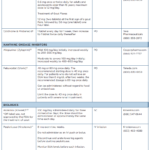
Dr. Pillinger
ACR CONVERGENCE 2021—Gout has been recognized for centuries, yet exciting advances in its management continue to be made every year. Michael Pillinger, MD, a professor of medicine and a professor of biochemistry and molecular pharmacology in the Rheumatology Division at NYU Langone Health, New York City, presented an update on gout and its management as part of the meeting’s annual Review Course.
Some rheumatologists may be surprised to learn that anti-interleukin-1 (IL-1) therapy is a potential option under the 2020 ACR Guideline for the Management of Gout.1 In a study by Saag et al., 165 patients with gout were randomized to receive anakinra, in a subcutaneous dose of 100 mg or 200 mg daily for five days, or triamcinolone, intramuscularly in a dose of 40 mg once, for any gout flare over the course of two years. Although anakinra did not show superiority over triamcinolone for the primary end point of change in patient-assessed pain intensity in the most affected joint, the two medications had comparable efficacy in pain reduction. Further, anakinra was favored for most secondary end points without demonstrating any unexpected safety findings.2
The 2020 ACR guideline also provides valuable practical tips for clinicians, such as a conditional recommendation to start urate-lowering therapy if a patient has had one lifetime gout flare and has either chronic kidney disease of stage 3 or greater or a serum uric acid level greater than 9 mg/dL. Note: The voting panel, for the first time, conditionally recommended against treating asymptomatic hyperuricemia.
Regarding when to start urate-lowering therapy, a conditional recommendation in the guideline is to start it as soon as possible, and contrary to conventional wisdom in some clinical circles, starting urate-lowering therapy during an acute gout flare—if appropriate anti-inflammatory therapy is being given—is not contraindicated. Clinicians are additionally advised to continue prophylactic therapy with colchicine or another agent for three to six months when starting urate-lowering therapy; to switch hydrochlorothiazide for an alternative anti-hypertensive (preferably losartan), whenever possible; and to continue urate-lowering therapy indefinitely once it has been started.1
Febuxostat Risk
A considerable portion of Dr. Pillinger’s talk covered the U.S. Food & Drug Administration’s (FDA) Boxed Warning regarding the risk of cardiovascular death associated with febuxostat. This warning was largely based on data from the CARES trial, in which patients with gout who were older than 50 and had cardiovascular disease were randomized to receive either febuxostat or allopurinol. In this study, patients treated with febuxostat were found to have higher all-cause mortality (hazard ratio 1.22, with a 95% confidence interval [CI] of 1.01 to 1.47) and cardiovascular mortality (hazard ratio 1.34, with a 95% CI of 1.03 to 1.73) than those treated with allopurinol.3


